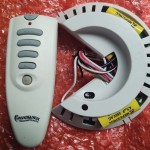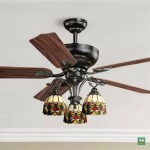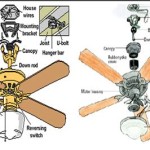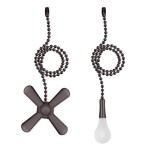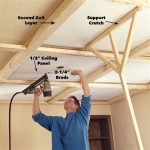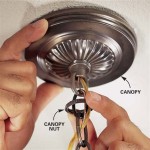Flush Mount Ceiling Fans on Slanted Walls: Installation, Considerations, and Benefits
Ceiling fans are a common fixture in many homes, providing both air circulation and aesthetic appeal. When dealing with rooms that have slanted or angled ceilings, however, the standard installation process becomes more complex. A flush mount ceiling fan, also known as a hugger ceiling fan, can often be the ideal solution for these spaces. This article will delve into the aspects of installing flush mount ceiling fans on slanted walls, addressing key considerations and benefits.
The primary challenge when installing a ceiling fan on a slanted ceiling is ensuring the fan hangs level and operates safely. Traditional ceiling fans with a downrod are often incompatible because the angle of the ceiling will cause the fan to swing unevenly, potentially damaging the fan, the ceiling, or even posing a safety hazard. Flush mount fans, designed to sit close to the ceiling, can mitigate this issue, but careful planning and preparation are still essential.
Understanding Flush Mount Ceiling Fan Limitations
While flush mount ceiling fans offer a viable solution for slanted ceilings, it's important to acknowledge their limitations. The primary limitation stems from their very design – being close to the ceiling. This proximity reduces the fan's ability to effectively circulate air compared to fans with a downrod. In rooms with high ceilings or larger square footage, a flush mount fan might not provide sufficient airflow to adequately cool or heat the space. The trade-off between functionality and spatial constraints must be carefully considered.
Furthermore, the selection of flush mount ceiling fans designed specifically for slanted ceilings is generally more limited than standard models. This may restrict the available styles, finishes, and features. Consumers may need to compromise on their aesthetic preferences or settle for a model with fewer features to accommodate the angled ceiling.
Finally, the installation process, while often simpler than installing a downrod fan on a slanted ceiling, can still present unique challenges. The electrical box must be securely mounted and properly positioned to ensure the fan operates safely and efficiently. This may require additional reinforcement or adjustments to the existing wiring.
Preparing for Installation on a Slanted Ceiling
Prior to purchasing and installing a flush mount ceiling fan for a slanted ceiling, a thorough assessment of the space is crucial. The first step involves accurately measuring the angle of the ceiling. This measurement will determine the type of mounting hardware and any necessary modifications. Some flush mount fans come with a swivel adapter specifically designed for angled ceilings, allowing the fan to hang level despite the slant. If the fan doesn't include such an adapter, one may need to be purchased separately.
The next step involves inspecting the existing electrical box. It must be rated for ceiling fan support and securely attached to a structural member of the ceiling. If the electrical box is not designed for ceiling fan use, it must be replaced with a fan-rated box. This is a critical safety measure, as a standard electrical box may not be able to withstand the weight and vibrations of a spinning ceiling fan.
Wiring presents another important consideration. Ensure the wiring is in good condition and properly grounded. If the wiring is old or damaged, it should be replaced by a qualified electrician. It's also crucial to verify that the circuit breaker is appropriately sized for the ceiling fan. An undersized circuit breaker may trip frequently, while an oversized breaker may not provide adequate protection against electrical faults.
Finally, consult the manufacturer's instructions for the specific flush mount ceiling fan model. The instructions will provide detailed guidance on the installation process, including any special considerations for slanted ceilings. Following the manufacturer's instructions precisely is essential for ensuring a safe and successful installation.
Installation Steps and Safety Precautions
The installation process for a flush mount ceiling fan on a slanted ceiling generally involves the following steps. First, turn off the power to the circuit at the breaker box. This is the most important safety precaution and must be followed before working with any electrical wiring.
Next, remove the existing light fixture or ceiling fan. Carefully disconnect the wiring, taking note of the wire colors and connections. If unsure about the wiring, consult a qualified electrician. Once the existing fixture is removed, install the fan-rated electrical box if necessary. Ensure the box is securely attached to a structural member of the ceiling.
Attach the mounting bracket to the electrical box. If using a swivel adapter, install it between the mounting bracket and the fan motor. The swivel adapter will allow the fan to hang level despite the angle of the ceiling. Connect the wiring according to the manufacturer's instructions, matching the wire colors and ensuring all connections are secure. Use wire connectors to splice the wires together and wrap them with electrical tape for added insulation.
Carefully lift the fan motor into place and attach it to the mounting bracket. Secure the fan motor with the provided screws and bolts, ensuring they are tightened properly. Install the fan blades and light kit (if applicable) according to the manufacturer's instructions. Finally, restore power to the circuit at the breaker box and test the fan to ensure it operates correctly. Check for any unusual noises or vibrations and adjust the fan as needed.
Throughout the entire installation process, safety should be the paramount concern. Wear appropriate safety gear, including safety glasses and gloves. If uncomfortable working with electrical wiring, hire a qualified electrician. Double-check all connections before restoring power to the circuit. A poorly installed ceiling fan can pose a serious safety hazard, so it's essential to take the necessary precautions to ensure a safe and successful installation.
Consider the weight capacity of the ceiling. Flush mount fans, while closer to the ceiling, still have weight that needs to be supported. Ensure the ceiling structure can handle the fan's weight. If there is any doubt, consult a structural engineer.
Benefits of Using Flush Mount Fans on Slanted Ceilings
Despite the limitations, flush mount ceiling fans offer several benefits when used on slanted ceilings. The most significant benefit is their ability to provide air circulation in spaces where a traditional ceiling fan with a downrod would be impractical or impossible to install. By sitting close to the ceiling, flush mount fans minimize the risk of the fan blades hitting the slanted ceiling, preventing damage to both the fan and the ceiling.
Another benefit is their space-saving design. In rooms with low ceilings or limited headroom, a flush mount fan can be a more comfortable and practical choice than a downrod fan. The reduced height of the flush mount fan allows for more clearance, minimizing the risk of occupants hitting their heads on the fan blades.
Furthermore, flush mount ceiling fans can offer a more aesthetically pleasing appearance in some spaces. Their sleek, low-profile design can complement modern or minimalist decor styles. The close proximity to the ceiling can also create a more unified and integrated look, as the fan appears to be a natural extension of the ceiling rather than a separate fixture.
Some modern flush mount ceiling fans incorporate energy-efficient LED lighting, which can further enhance their appeal. LED lighting offers several advantages, including longer lifespan, lower energy consumption, and reduced heat output. The combination of air circulation and energy-efficient lighting can make flush mount ceiling fans a cost-effective and environmentally friendly choice for homes with slanted ceilings.
The availability of remote controls for many flush mount ceiling fans adds to their convenience. Remote controls allow for easy adjustment of fan speed and lighting levels from anywhere in the room. This feature is particularly useful in rooms with high ceilings or for individuals with mobility issues.
Proper maintenance is essential for ensuring the longevity and performance of a flush mount ceiling fan. Regularly clean the fan blades to remove dust and debris, which can reduce the fan's efficiency. Check the screws and bolts periodically to ensure they are tightened properly. Lubricate the motor as needed to prevent noise and wear. By following these simple maintenance tips, homeowners can extend the life of their flush mount ceiling fan and enjoy its benefits for years to come.
Choosing a flush mount ceiling fan also allows for creative lighting designs. Many models come with integrated LED lights that can be dimmed or adjusted to create different moods. Consider the lighting needs of the room and choose a fan with appropriate lighting features. Some fans even have color-changing LEDs, offering a wide range of lighting possibilities.
While the primary purpose of a ceiling fan is to provide air circulation, the aesthetic contribution should not be overlooked. Select a fan style and finish that complements the existing decor of the room. A well-chosen fan can enhance the overall look and feel of the space.
The cost of a flush mount ceiling fan can vary depending on the brand, features, and style. While some models are relatively inexpensive, others can be quite pricey. Consider the budget when making a purchase, but don't compromise on quality or safety. A well-made ceiling fan will last longer and provide better performance than a cheaper model. The long-term benefits of a quality ceiling fan often outweigh the initial cost.

How To Install A Ceiling Fan On Sloped Lemon Thistle

How To Choose A Ceiling Fan For Vaulted Ceilings Lightology

How To Install A Ceiling Fan On Sloped Lemon Thistle

Ceiling Fans For Vaulted Ceilings Downrod

Electrical Mount Ceiling Fan At The Peak Of A Sloped Home Improvement Stack Exchange

Vaulted Sloped Ceiling Adapter For Modern Fan Company Fans Stardust

Vaulted Ceiling Fans Sloped Lightology

Ceiling Fans For Angled Ceilings

54 Modern Forms Aviator 5 Flush Black Smart Ceiling Fan

Ariccia 52 Inch Flush Mount Ceiling Fan With Led Light And Wall Switch Black
Related Posts


